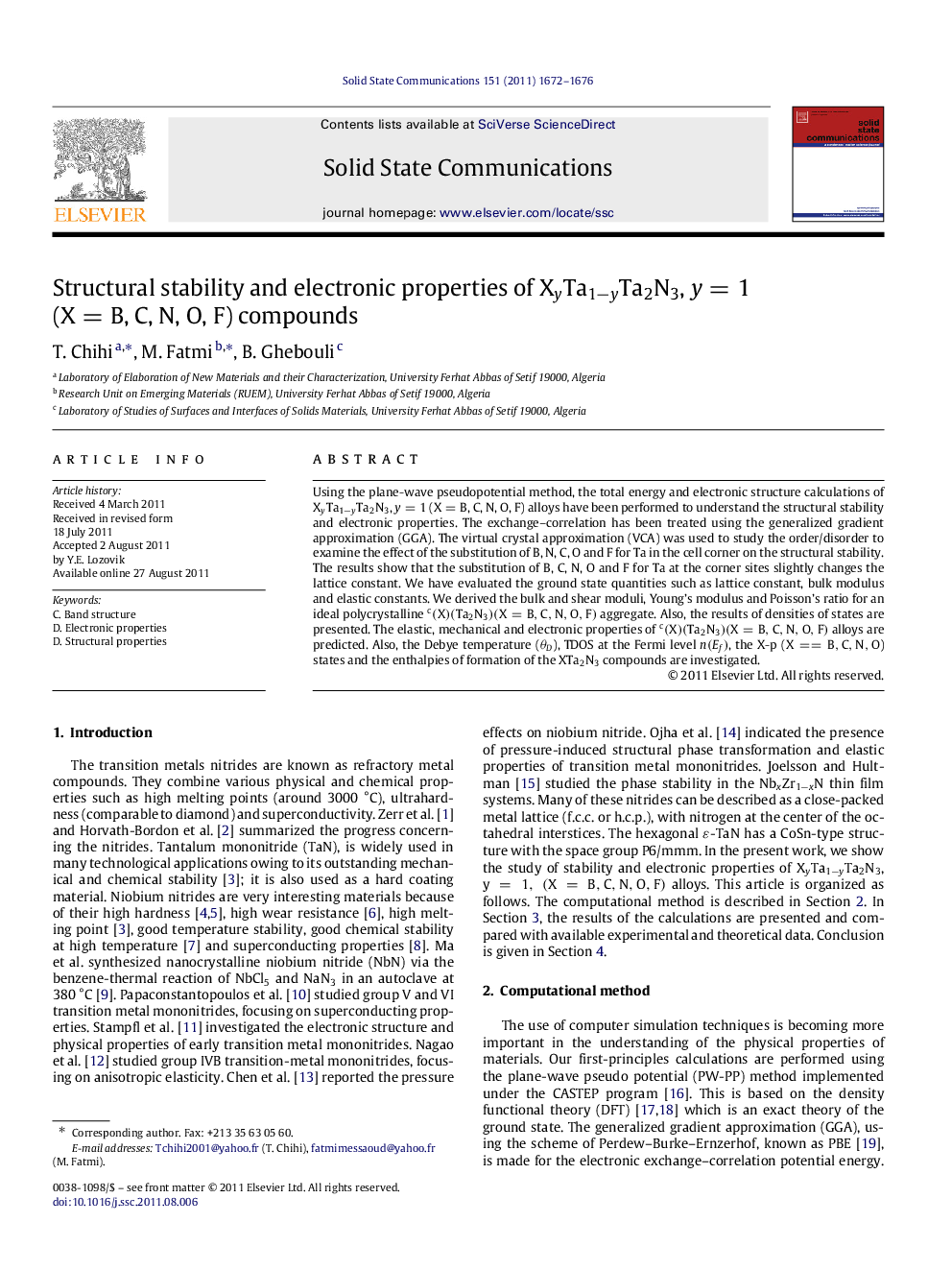| Article ID | Journal | Published Year | Pages | File Type |
|---|---|---|---|---|
| 1593421 | Solid State Communications | 2011 | 5 Pages |
Using the plane-wave pseudopotential method, the total energy and electronic structure calculations of XyTa1−yTa2N3, y=1y=1 (X=B, C, N, O, F) alloys have been performed to understand the structural stability and electronic properties. The exchange–correlation has been treated using the generalized gradient approximation (GGA). The virtual crystal approximation (VCA) was used to study the order/disorder to examine the effect of the substitution of B, N, C, O and F for Ta in the cell corner on the structural stability. The results show that the substitution of B, C, N, O and F for Ta at the corner sites slightly changes the lattice constant. We have evaluated the ground state quantities such as lattice constant, bulk modulus and elastic constants. We derived the bulk and shear moduli, Young’s modulus and Poisson’s ratio for an ideal polycrystalline c(X)(Ta2N3)(X=B,C,N,O,F) aggregate. Also, the results of densities of states are presented. The elastic, mechanical and electronic properties of c(X)(Ta2N3)(X=B,C,N,O,F) alloys are predicted. Also, the Debye temperature (θDθD), TDOS at the Fermi level n(Ef)n(Ef), the X-p (X==B,C,N,O) states and the enthalpies of formation of the XTa2N3 compounds are investigated.
► The Debye temperature and the X-p (X=B,C,N,O) states increase when we move from B to O in the same row. ► The Fermi level n(Ef)n(Ef) of the XTa2N3 compounds increase when we move from B to O. ► The X-p (X=B,C,N,O) states of the XTa2N3 increase when we move from B to O.
